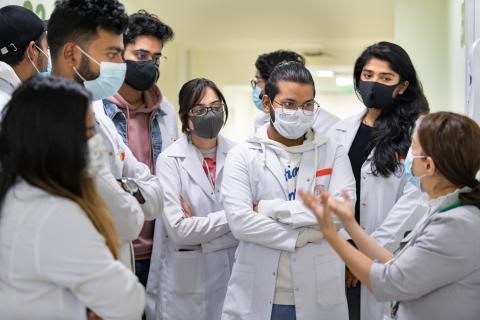A new class of antibiotics, lariocidin, is discovered
A team from Canada and the United States has found a candidate to form part of a new class of antibiotics, lariocidin. This could be effective against multi-resistant bacteria. The finding is published in the journal Nature.

Rafael Cantón - antibióticos EN
Rafael Cantón
Head of the Microbiology Department at the Ramón y Cajal University Hospital, member of the Ramón y Cajal Institute for Health Research (IRYCIS) and the CIBER of Infectious Diseases (CIBERINFEC) of the Carlos III Health Institute.
The discovery of antimicrobials with new mechanisms of action, i.e. that act in a totally different way to those used in therapeutics, has been a frustrating process as none have reached clinical use in the last 30 years. Only a few with these characteristics are now in advanced clinical trials.
Those recently approved by the EMA or the FDA have already known chemical structures in which modifications are introduced in their chemical structure to favour better administration, low toxicity and to partially avoid resistance mechanisms. In some cases, already known antibiotics (for example, cephalosporins or carbapenems) have been associated with inhibitors of resistance mechanisms (for example, the new beta-lactamase inhibitors).
Finding a compound with antimicrobial activity with a truly novel mechanism of action is a milestone in the fight against resistant bacteria. Although there is still a way to go before it reaches the clinic, the authors of the manuscript show the discovery of a new class of antimicrobials with a peptide structure. They present lariocidin, which acts on protein synthesis, but in a totally different way and on different targets to other antimicrobials that also interfere with this synthesis, such as aminoglycosides or tetracyclines.
Most of the antimicrobials we use today have been discovered following the method initiated by Alexander Fleming with the discovery of penicillin. This antibiotic is produced by a fungus (Penicillinum notatum) that inhibits the growth of bacteria such as Staphylococcus aureus. Curiously, the authors of the discovery of lariocidin used a method of antibiosis very similar to that described by Fleming. They started with extracts obtained from microorganisms isolated from the environment and measured the inhibition of the growth of different bacteria, including multi-resistant microorganisms. However, they subsequently combine it with modern molecular techniques of genome sequencing to confirm the origin of its production and identify its mechanism of action. Lariocidin is produced by the bacterium Paenibacillus sp., a bacterium that can be isolated from the rhizosphere and has been used as a biocontroller of phytopathogens.
Lariocidin has a broad spectrum of action as it is effective against both Gram-positive and Gram-negative bacteria, including those identified as priorities by the World Health Organisation in the search for new antimicrobials due to their multi-drug resistance profile. The most outstanding aspects of this new antibiotic are its low toxicity to human cells and its low capacity to select resistant mutants, which opens up an optimal horizon for its possible use. However, the authors leave open the possibility of modifying its structure or identifying similar compounds that improve lairocidin and are candidates for therapeutic use. In this process, clinical trials will be necessary to confirm its low toxicity and clinical efficacy.
Jangra et al.
- Research article
- Peer reviewed



